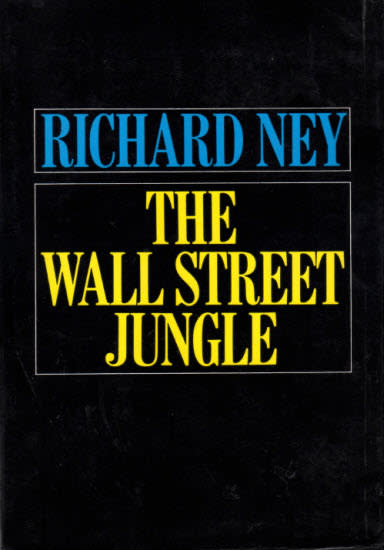Rigging the Stock Market is Old Hat
Is the latest revelation of stock market manipulation by high-speed traders via a just released 60 Minutes report really new?
Before Michael Lewis’ latest book “Flash Boys,” there was “Wall Street Jungle” – a 1970 bestseller by Richard Ney.
Although Ney’s insightful book was written in an era before the dominance of electronic trading, his expose of stock market rigging (DIA) still applies today.
Ney explained:
“Specialists are a privileged group of brokers on the floor of the Exchange. Most investors’ orders to buy or sell stock goes through their hands. What happens when an investor’s order conflicts with the price the specialist wants for his own trading? In many situations, specialists ‘have the power to set and control prices, unilaterally’ as the Securities and Exchange Commission itself has admitted in a little-red document called the ‘Special Study Report.’ “
When reading Ney, just replace the word “market specialist” with “high-speed trader” and you’ll understand that although the specific players and roles of both groups are different, the fleecing of the investing public is unchanged.
High-speed traders also known as “HFTs,” pay big bucks to major stock exchanges like NYSE Euronext and Nasdaq (NDAQ) for privileged access to super fast data streams. They also pay handsome sums to place their computerized systems in close proximity to stock exchange data centers. All of this gives HFTs an unfair advantage in trading stocks (VOO) ahead of the public. Although stock exchanges refer to the money they accept from HFTs as “data licensing fees,” the revenue garnered is really nothing more than legalized bribery.
Referring to the specialist system (and keep the HFT racket in mind when reading him), Ney wrote:
“The NYSE and the regulatory bodies of the federal government have failed to face the basic fault in the specialist’s modus operandi – namely, that there is a conflict of interest built into his function. He is meant to be the representative – in the key position on the Stock Exchange – of the public, but at the same time he gains his income by trading against the public.”
Although high-speed traders have never once served the investing public’s interest, their existence has been promoted as a necessary requirement for the smooth and efficient operation of financial markets (QQQ). “Without HFTs, market liquidity would dry up and buyers and sellers would disappear,” is what we’re told by Exchange officials, and even alleged regulators. Sadly, much of this propaganda has even found its way into academic research paid for and funded by you know who.
Securities regulators knew about the HFT scandal before 60 Minutes publicized it. But the social relationship between the Securities and Exchange Commission (SEC) and stock exchanges provides a hierarchy of “assistance and shelter” as the late economist Milton Friedman correctly observed.
U.S. stock exchanges are theoretically governed by a high moral code when in fact they continuously pit two distinct groups (HFTs and the investing public) against each other. Guess who’s winning?
WATCH: Is the stock market rigged? By 60 Minutes
Follow us on Twittter @ ETFguide
Related Posts:


